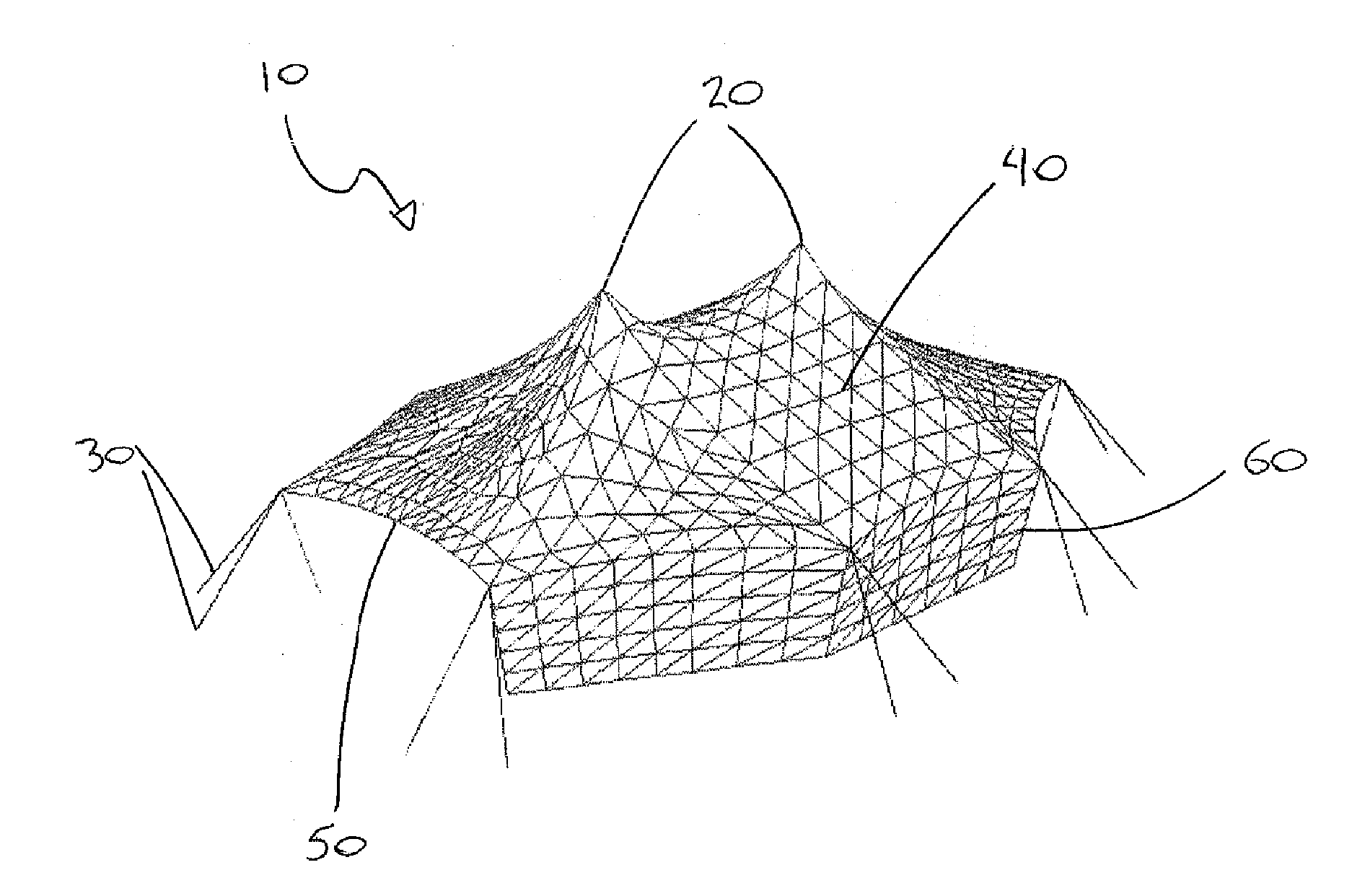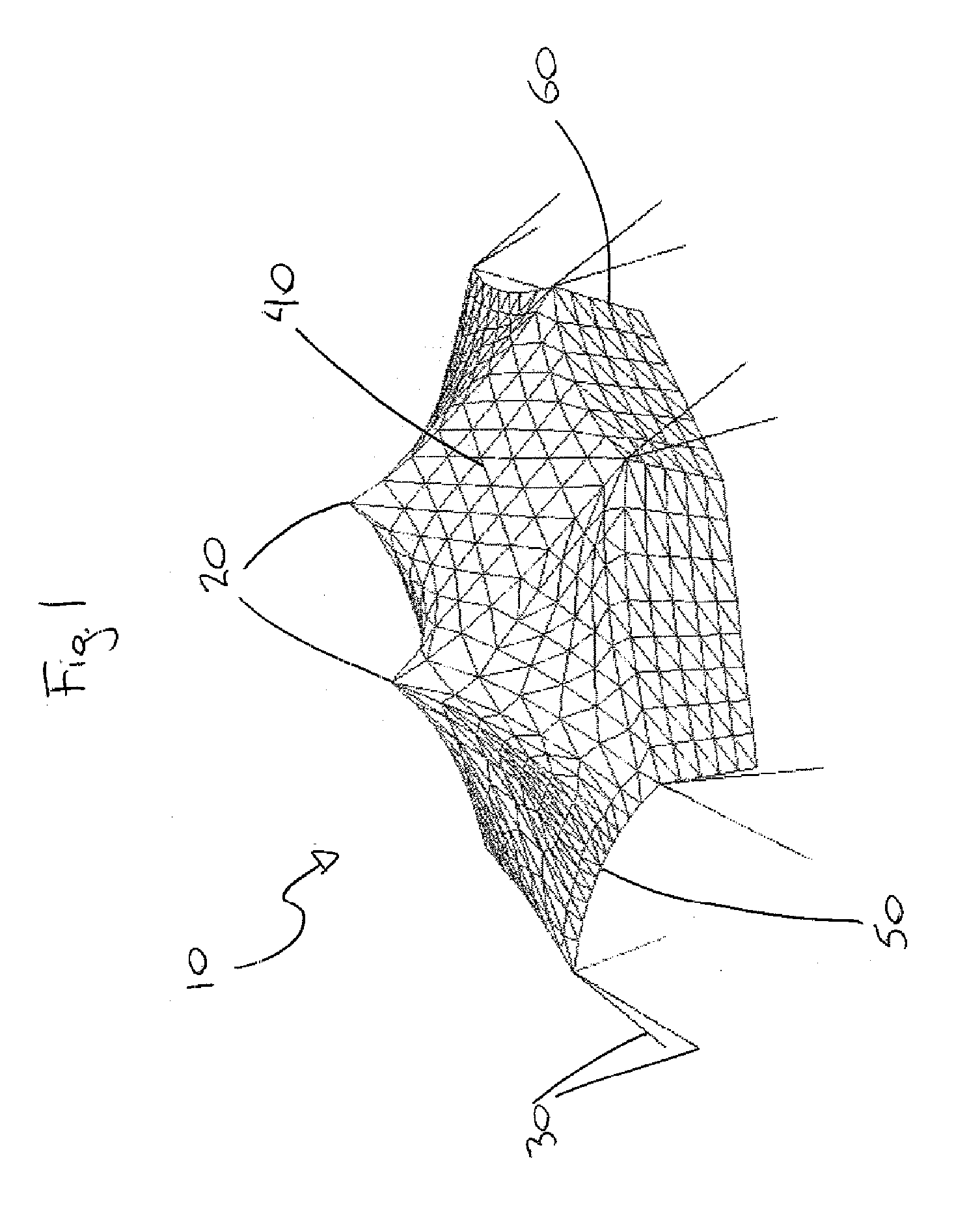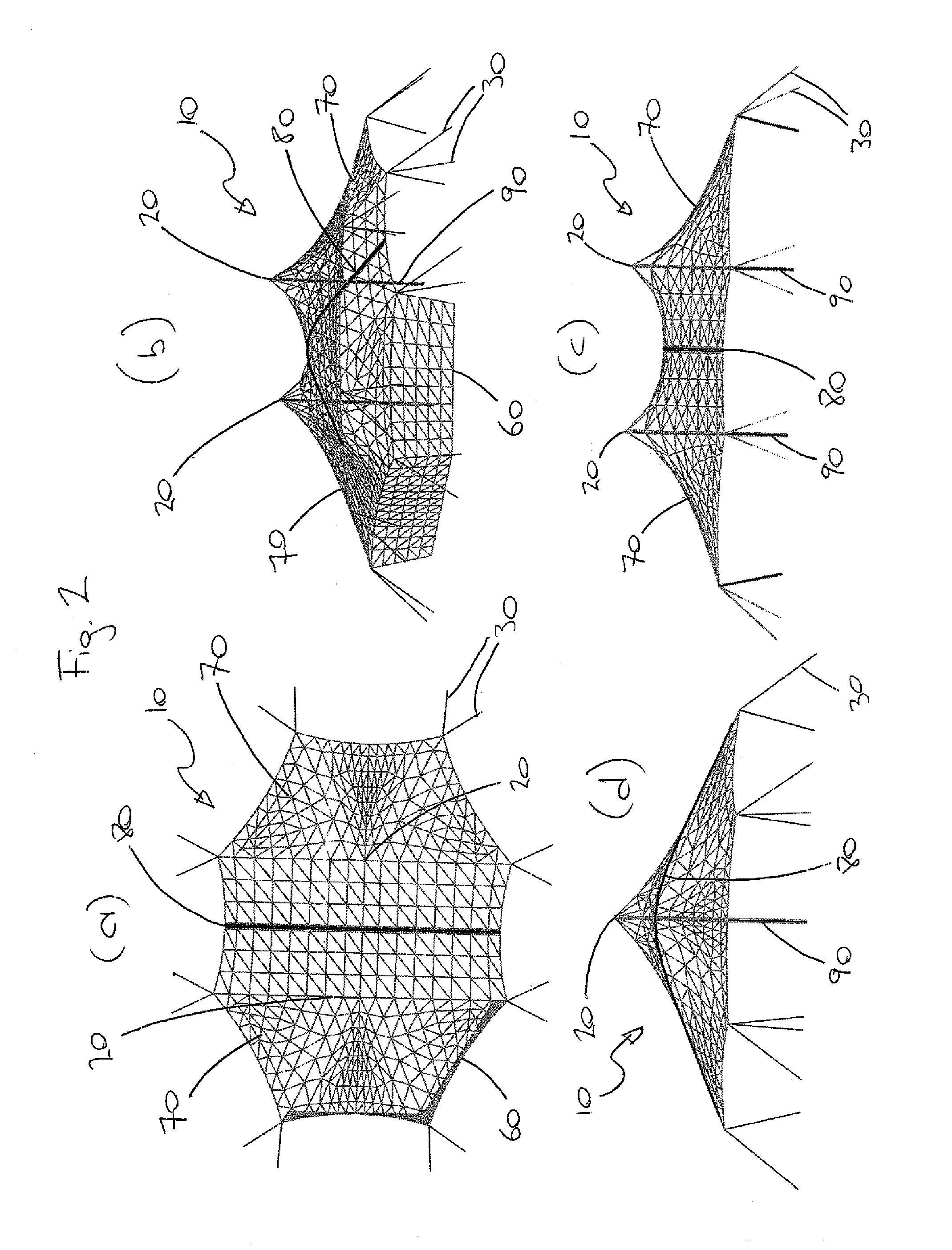Modular pole tent and joining means
- Summary
- Abstract
- Description
- Claims
- Application Information
AI Technical Summary
Benefits of technology
Problems solved by technology
Method used
Image
Examples
Embodiment Construction
[0037] Referring to FIG. 1, a pole tent 10 is shown, having peaks 20 and anchor lines 30. The flexible membrane 40 of the tent has perimeter catenaries 50. Tent wall 60 may be removed and / or repositioned to another side of the tent 10 (see, for example, FIGS. 2(a) and 2(b)).
[0038] Referring to FIGS. 2(a-d) and 12, the membrane 40 of the tent 10 is made up of two modules, or bays, 70. The modules 70 are joined to one another along an interface or field joint 80, the details of which will be described more fully below. The interface 80 passes through a valley, (i.e. low point) of the membrane 40. The tent 10 has two centre poles 90, each supporting a respective one of the peaks 20, and eight corner posts 100 supporting the perimeter catenaries 50 at ends thereof. The membrane 40, the perimeter catenaries 50, and the interface 80 are tensioned by the anchor lines 30, producing a tensile structure. The tent 10 has no beams.
[0039] The distance from the peak or centre pole of a tent to ...
PUM
 Login to View More
Login to View More Abstract
Description
Claims
Application Information
 Login to View More
Login to View More - R&D
- Intellectual Property
- Life Sciences
- Materials
- Tech Scout
- Unparalleled Data Quality
- Higher Quality Content
- 60% Fewer Hallucinations
Browse by: Latest US Patents, China's latest patents, Technical Efficacy Thesaurus, Application Domain, Technology Topic, Popular Technical Reports.
© 2025 PatSnap. All rights reserved.Legal|Privacy policy|Modern Slavery Act Transparency Statement|Sitemap|About US| Contact US: help@patsnap.com



